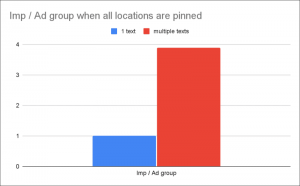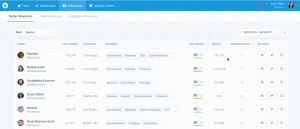Your marketing department is too small! I don’t mean that your staff is not large enough. I mean that your ability to reach your buyer, engage and persuade (find and convert) is limited from your marketing department. There are two reasons for this.
First, your B2B buyer is well along the path to vendor selection before willing to speak with you, sign up for a demo, or even attend one of your top of the funnel webinars in their true identity.
Secondly, the culture of social media has shifted the way the B2B buyer thinks, behaves and conducts their research. With millennials making up close to 50% of the workforce, we’re seeing research conducted on social media including LinkedIn, Twitter, YouTube and Facebook.
The B2B seller must embrace the truth that the B2B buyer wants to engage person-to-person (P2P), because we’re living in the connected age.
Expertise Is Deep In The Organization
Consider that most of the domain expertise in any company exists among the employees responsible for functions such as consulting, customer service, engineering, finance, human resources, product management and sales. The employees who live and breath your company’s brand promise on a daily basis are best suited to be engaged by your buyers. The more influential your employees are in your market segment, the better the chance your brand message will reach your target buyer.
Convert All Employees To Marketers
NO! ….That’s not the point. …NOT all employees want to be influential brand ambassadors. However, some do. And, the way to get those employees to become brand advocates or brand evangelists, is to develop and roll out an employee advocacy plan. Here is a five step program to consider.
1. Develop A Framework
A framework begins with goal setting and stakeholder identification. Consider the culture of your organization. Is the current culture conducive to empowering employees to be brand advocates? Will you have support from at least one person in the c-suite? What about middle management? What about your employees? If the culture won’t support it, an employee advocacy plan will be an uphill battle from day one. Start with culture…
2. Create A Governance Policy
The “g” word should be embraced. An effective governance policy will clearly communicate to employees how they can participate in online engagement on behalf of your brand. It should not be a legal document that spells out what not to do. Your employee handbook is a good place to look. Often, all it takes is an update to the handbook in the section that covers communication and behavior. In the end, a governance plan should give employees confidence to engage online as a brand advocate. Be sure to spell out that employees are not required to be a public facing advocate. However, if they choose to share content and engage online on topics pertaining to your brand, the governance policy should clearly spell out how they can do so effectively within the boundaries of your corporate communications standards.
3. Be Selective At Launch
As I stated earlier – and it warrants re-stating – not all employees want to be a brand advocate. It’s wise to start small with a small group of employees who are already active on social media. These employees might be in different areas of your business. The important thing is to start with a small team of people that are pre-disposed to collaborating on a formal plan. You’ll dramatically increase your chance of long term success with this approach.
4. Training
Start with the “why.” Create a training program with at least three steps. Don’t assume a “one and done” training event will work. Your employees are busy. Schedule training events in one hour increments. Emphasize how they can share content that is relevant to your brand and to their professional interests. Emphasize that you don’t expect them to “sell” for your brand. Encourage employees to be conversation starters online. Encourage them to gain influence and show them how that is possible. Tell them that you embrace their influence.
5. Create A Performance Strategy
In this step, you’ll need to create more structure to expand your employee advocacy plan beyond the initial launch. As with anything in business, a tool will be helpful in managing the program. A leaderboard allows you to set up teams of employees and track participation, engagement, content sharing and other metrics decided upon to measure the impact on your business. For example, Dell tracks how influential their employees have become as a result of their training program.
There are risks and rewards in developing, launching and tracking performance of an employee advocacy plan. At the time I’ve published this post, it’s still fairly early days in this business discipline. To hear more on this topic, including some of the pitfalls to avoid, listen to my podcast on our Social Business Engine show with Eric Nystrom from EveryoneSocial. Eric has seen many brands rollout employee advocacy programs and he shares his experiences with me on this podcast.
(195)






